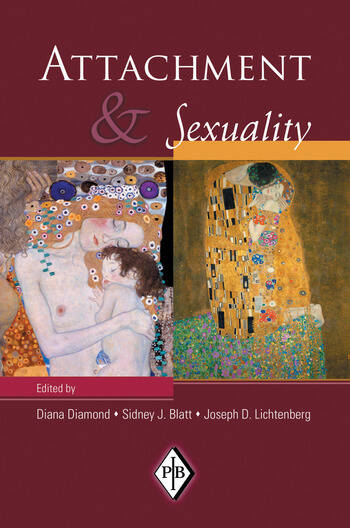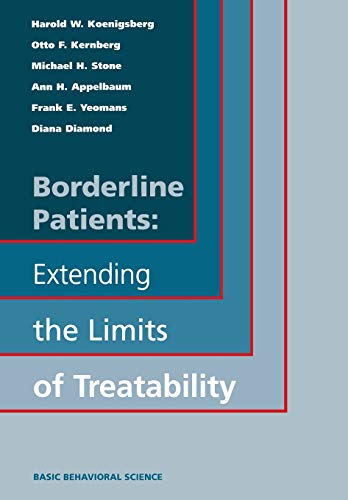
In this book, Frank E. Yeomans, Diana Diamond, and Eve Caligor provide a systemic review of Otto Kernberg’s multiple contributions to psychoanalysis, psychiatry, psychology, and our understanding of the mind and group behavior.
Otto Kernberg: A Contemporary Introduction
In this book, Frank E. Yeomans, Diana Diamond, and Eve Caligor provide a systemic review of Otto Kernberg’s multiple contributions to psychoanalysis, psychiatry, psychology, and our understanding of the mind and group behavior.
The book spans the full scope of Kernberg’s career, both highlighting the diversity of topics on which his writings have shed light and emphasizing conceptual threads that link the different areas of his work. It accessibly follows the experiences that had an impact on the development of his thought and the increasingly strong impact his writing and thinking have had on psychoanalysis and related fields. The authors draw on their decades of working closely with Kernberg to offer a unique insight into his teaching and research, focusing on his work on borderline and narcissistic pathology and the fundamental conceptualization of personality disorders.
Including an overview of Kernberg’s critique and expansion of traditional psychoanalytic training, as well as his role in developing transference-focused psychotherapy, this book is an invaluable guide to students, researchers, and analysts in practice and training looking to integrate Kernberg’s ideas into their own clinical and theoretical work.
Treating Pathological Narcissism with Transference-Focused Psychotherapy
Filling a crucial gap in the clinical literature, this book provides a contemporary view of pathological narcissism and presents an innovative treatment approach. The preeminent authors explore the special challenges of treating patients—with narcissistic traits or narcissistic personality disorder—who retreat from reality into narcissistic grandiosity, thereby compromising their lives and relationships. Assessment procedures and therapeutic strategies have been adapted from transference-focused psychotherapy (TFP), a manualized, evidence-based treatment for borderline personality disorder. Rich case material illustrates how TFP-N enables the clinician to engage patients more deeply in therapy and help them overcome relationship and behavioral problems at different levels of severity. The volume integrates psychodynamic theory and research with findings from social cognition, attachment, and neurobiology.
Attachment and Sexuality
The papers featured in Attachment and Sexuality create a dense tapestry, each forming a separate narrative strand that elucidates different configurations of the relationship between attachment and sexuality. As a whole, the volume explores the areas of convergence and divergence, opposition, and integration between these two systems. It suggests that there is a bi-directional web of influences that weaves the attachment and sexual systems together in increasingly complex ways from infancy to adulthood.
The volume’s unifying thread is the idea that the attachment system, and particularly the degree of felt security, or lack thereof in relation to early attachment figures, provides a paradigm of relatedness that forms a scaffold for the developmental unfolding of sexuality in all its manifestations. Such manifestations include infantile and adult, masturbatory and mutual, and normative and perverse.
Also central to the papers is the idea that the development of secure attachment is predicated, in part, on the development of the capacity for mentalization, or the ability to envision and interpret the behavior of oneself and others in terms of intentional mental states, including desires, feelings, beliefs, and motivations. Topics discussed in the book will help to shape the direction and tenor of further dialogues in the arena of attachment and sexuality.
Borderline Patients: Extending the Limits of Treatability
Borderline conditions are a growing presence in the treatment room, yet they are uncommonly resistant to treatment. The authors, all Senior Fellows at the Personality Disorders Institute of the New York Presbyterian Hospital, Westchester Division, and all also engaged in private practice, have already articulated the modality they call Transference-Focused Psychotherapy. Now, in an unusually textured elaboration, they confront the complications that limit treatability—co-existing psychopathologies, early trauma/dissociation, problems endemic to therapeutic situation like attachment disturbances and erotic transferences—and bring new rounds of clinical ammunition to meet those challenges.
Cinematic Reflections on the Legacy of the Holocaust: Psychoanalytic Perspectives
This book focuses on how film is particularly suited to depict Holocaust experiences with vividness and immediacy. The similarity of moving images and sound to our dream experience allows access to unconscious processing. Film has the potential to reveal the vast panorama of Holocaust history as well as its intrapsychic reverberations. Yet despite the recent prominence of Holocaust films, documentaries, and TV series as well as scholarly books and memoirs, these works lack a psychoanalytic optic that elucidates themes such as the repetition compulsion, survival guilt, disturbances in identity, and disruption of mourning that are underlying leitmotifs.
Cinematic Reflections on the Legacy of the Holocaust will be of great interest to psychoanalysts and therapists as well as to scholars in trauma, film, and Jewish studies. It is also of interest to those concerned with the prevention of genocide and mass atrocities and their long-term effects.
An international group of psychoanalysts and film scholars address the enduring emotional legacy of the Holocaust in Cinematic Reflections on the Legacy of the Holocaust: Psychoanalytic Perspectives. Particular focus is given to how second and third generation survivors have explored and confronted the psychic reverberations of Holocaust trauma in cinema

Affect and Attachment in the Family: A Family-Based Treatment of Major Psychiatric Disorders
Although there is widespread agreement among clinicians that family environment influences the course of psychiatric disorder, existing treatment approaches emphasize psychoeducation and symptom management while minimizing the impact of more entrenched and enduring family characteristics. By exploring the muitigenerational patterns of attachment and ways of expressing affect in families of severely disturbed patients Jeri A. Doane and Diana Diamond advance the theoretical and clinical understanding of the treatment of major psychiatric disorder.
Based on empirical findings from the Yale Psychiatric Institute Family Study, a longitudinal research project, the book describes a family typology (low intensity, high intensity, and disconnected) that reflects intergenerational patterns of attachment bonds and styles of expressing affect in the family. In order to work effectively with families who have a member with a major psychiatric disorder, it is crucial to understand how the history of each family member’s attachments and primary relationships becomes reprojected and reenacted in the next generation.
Using rich clinical case studies, the authors detail a family therapy model in which attachment dysfunction is addressed as the first critical step in treatment. Equipped with insights into the family’s attachment history, the clinician is then able to formulate interventions that address the complexity of the underlying patterns of disturbed family functioning. The authors’ approach is aimed not only at relapse prevention but at improving the quality of relating among family members beyond periods of acute stress. Although the research study focused on severely disturbed patients, this treatment approach can be helpful for clinicians treating a wide range of family dysfunction.



